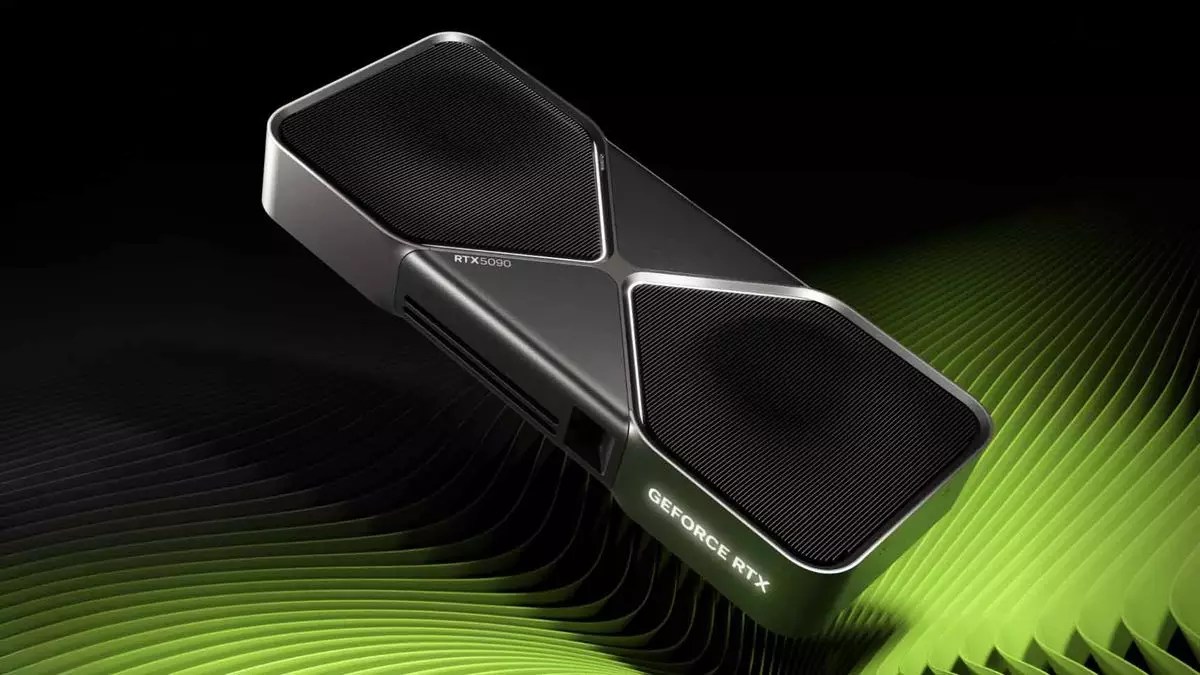The realm of high-performance graphics cards is in constant flux, with manufacturers like Nvidia consistently pushing the boundaries of technology. Recently, leaks surrounding the upcoming Nvidia RTX 5090 have sparked considerable buzz, especially given the prospect of a much more powerful variant than what is currently anticipated. This exploration delves into the implications of these leaks, how they compare to Nvidia’s current offerings, and what they could mean for enthusiastic gamers and content creators alike.
At the forefront of the rumored RTX 5090 enhancements is the supposed integration of the GB202 GPU, which boasts an impressive increase in CUDA cores—a staggering 24,576 cores, to be precise. This proposed configuration represents a significant 13% increase over the already substantial 21,760 cores attributed to the RTX 5090 as per its spec sheets. This leap would not only mark a monumental step in terms of raw processing power but also enhance the card’s capability to handle complex tasks and high-end gaming scenarios. For enthusiasts, these numbers are nothing short of exhilarating, promising more substantial performance and speed in demanding applications.
Furthermore, the purported addition of GDDR7 memory at a blistering 32 Gbps, compared to the 28 Gbps found in the original RTX 5090 plan, is indicative of a shift towards even greater bandwidth—translating to an impressive increase from 1,792 GB/s to an astonishing 2,048 GB/s. Such improvements are critical in ensuring that the vast number of CUDA cores can operate efficiently, providing a smoother experience for high-resolution gaming and resource-intensive creative applications.
The leak of the engineering board has revealed remarkable insights into Nvidia’s design and production strategies. Unlike the publicly available RTX 5090, these hidden prototypes showcase a fully operational GB202 chip confirmed to handle up to 800 W. This capability suggests that Nvidia has managed to sustain clock speeds on par with the standard RTX 5090 model without the need for extensive downclocking. For users, this means that the engineering board could function as a supercharged version of Nvidia’s graphics capabilities, albeit not meant for retail release.
However, history suggests that Nvidia has previously curtailed the full power of its top-tier GPUs. Take, for example, the RTX 4090, which utilizes the AD102 GPU architecture with a potential core count of 18,432, but only features 16,384 cores in its retail version. This raises an existential question regarding Nvidia’s true competitive strategy. If AMD’s offerings don’t pose an immediate threat, does Nvidia feel less compelled to release a fully realized high-power variant?
The market landscape has shifted considerably, particularly with AMD’s RDNA 4 architecture poised to enter the fray. Yet, AMD’s approach seems to focus more on mid-range solutions rather than competing at the very high end. This context provides Nvidia with a unique opportunity to shine brighter without competitive pressures. Nevertheless, dissatisfaction has emerged within the tech community regarding the modest specifications of the RTX 5090; many tech enthusiasts have expressed feelings of underwhelm towards Nvidia’s latest releases.
What remains to be seen is how Nvidia addresses consumer concerns surrounding its forthcoming products. Could the corporation consider a higher-end RTX 5090 Ti or a Titan variant, unleashing a fully-equipped GB202? Such options would likely mitigate many critical views, and while they would undoubtedly carry a hefty price tag, the excitement and eagerness for advanced functionality could justify the costs for many.
Ultimately, the hints of what the RTX 5090 could have been serve not only to showcase the potential power of Nvidia’s latest architecture but also reflect a broader narrative of expectations versus reality. As leaks continue to capture the imaginations of tech aficionados, Nvidia must grapple with how best to align its product offerings with consumers’ aspirations.
With a possibly more potent variant on the horizon and AMD’s strategies lurking in the backdrop, Nvidia is at a critical juncture. The ensuing developments in hardware technology, coupled with customer anticipation, position the company uniquely to either bolster its reputation or face heightened scrutiny over its decisions. As the GPU wars continue to evolve, the impending official releases will undoubtedly be watched with bated breath by fans, eager to see if Nvidia can deliver on its promise of innovation and performance.


Leave a Reply